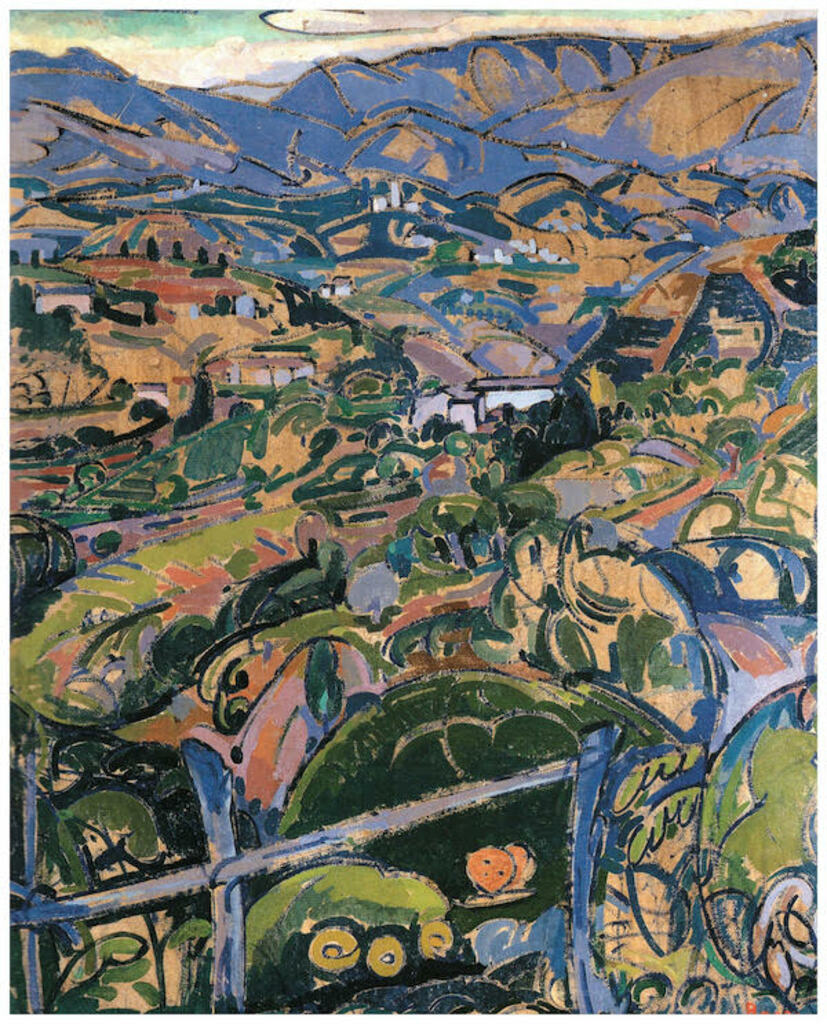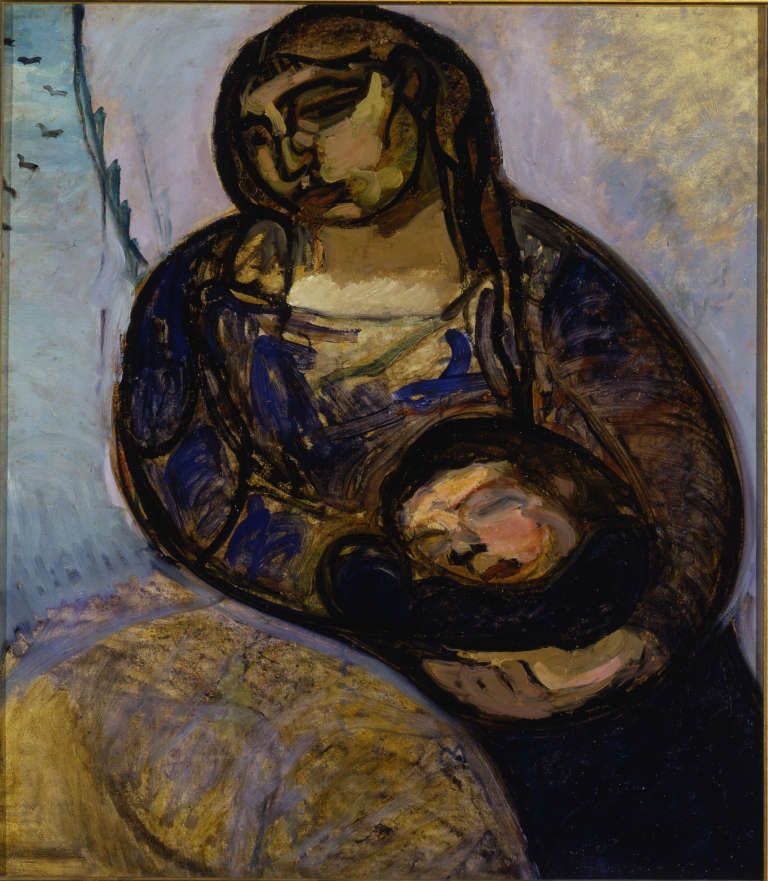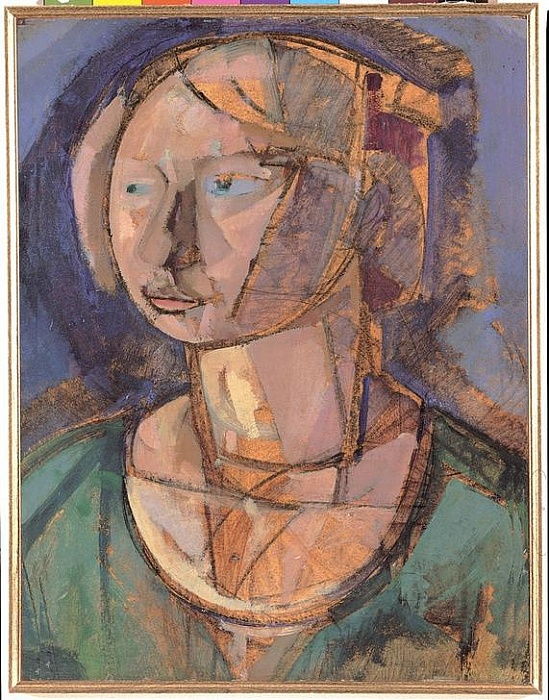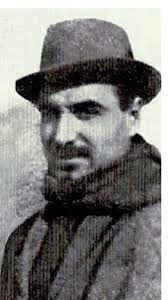Written by Valentina Biondini, literature expert
Since it is not only female artists who are forgotten, “Who’s Next?” decided to write about a young male artist, whose modern approach to painting can be defined ante litteram, and his personal story has fueled the myth of the mad painter. This is Gino Rossi, a figure unjustly ignored by the artistic world in toto, but even by the young generations of painters who instead owe him so much.
Gino Rossi (real name Luigi Rossi) was born in Venice in 1884 in a house of Calle of Orbi, in the San Samuele district, from a wealthy family. His father, in fact, was the farmer of Enrico Carlo Count of Borbone-Parma. Initially he studied at the Scolopi College and then at Foscarini high school that, however, he abandoned in 1898. Being cultured, refined and having a natural inclination for literary studies, he goes very quickly in search of an international modern painting, capturing its echo and trends even beyond the Italian borders. Therefore Rossi, in 1907, leaves the lagoon towards Paris with his friend, the sculptor Arturo Martini. Here he is overwhelmed by the painting of Van Gogh and the Fauves. But he is especially astonished by the colours and shapes of Paul Gauguin’s works. He returns once again in Paris in 1912, still with Arturo Martini, where he exhibits at the Salon de l’Automne, next to Amedeo Modigliani. To follow Gauguin’s footsteps, who shortly afterwards will became famous as the painter of Tahiti, Rossi goes to Bretagna: a stay that turns out to be a great discovery for him. Here, for instance, he draws inspiration for the composition of the famous painting “La fanciulla del fiore”, that Rossi defines «his most beautiful poetry». It’s an impenetrable image of a sulky girl, whose face is symmetrically highlighted in her enigmatic beauty by two vases of flowers immersed in the colour blue.
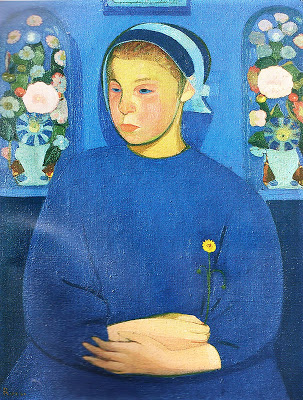
Back in his native land full of ideas and emotions, he begins to display at the exhibitons of Ca’ Pesaro museun of modern art, which at that time stood out as the centre of avantgarde movements, in opposition to the official exhibitions of the Biennale di Venezia. Just behind the name of Avanguardia Capaserina are hiding artists, first of all Rossi, who experiment with forms of art of European inspiration, in contrast both to the explotion of Futurism, and to the silent ripen of Metaphysics, two tendencies that will characterize the Italian art of the early Twentieth century. His first artistic period, recognisable from 1908 to the call to arms of 1914, is distinguished by works of intensified colours, that have as subjects breton landscapes, asolan descriptions and Burano views, accomplished during his visits in Asolo and Burano, where he retires from 1911, maybe for his introverted personality and aristocratic soul. In this kind of voluntary exile he tries to create an artistic cenaculum, in order to repropose again, in this little and defiladed venetian island, the mytical Bretagna of Gaugin that had so influenced his painting. There are paintings of a natural exuberance, where bright colours, such as blue, green and earthy tones are blended within a context that appears undefined, suspended. In fact, the images are simplified, without insisting on details. This is the phase in which matures his poetry of figures without landscapes and landscapes without figures, such as the “Testa di pescatore” or “Descrizione asolana”.
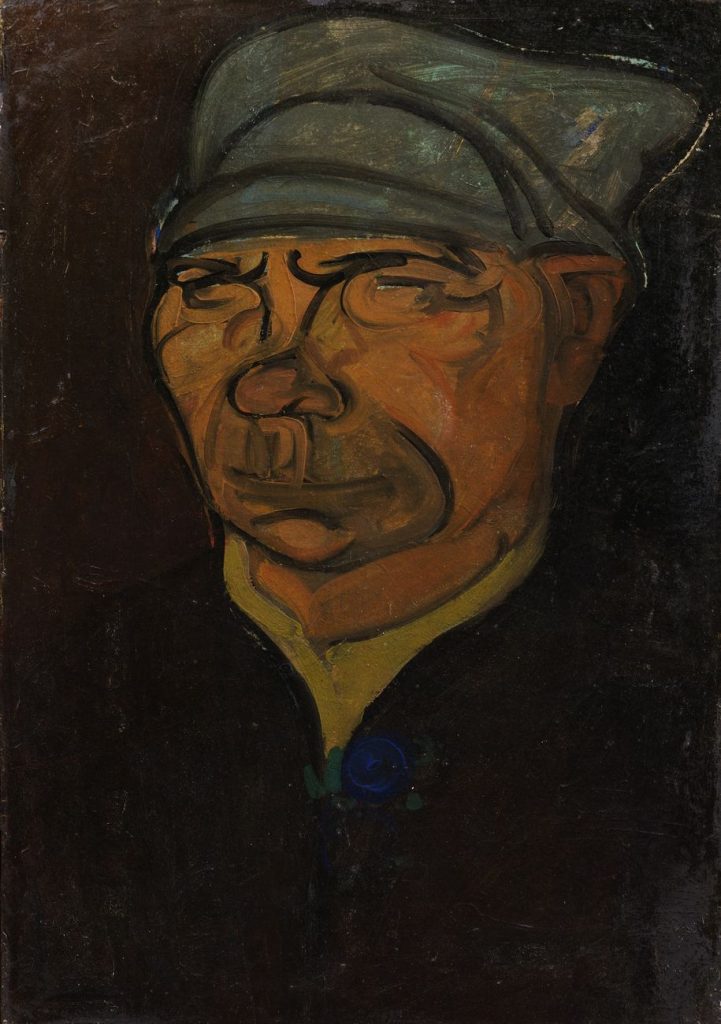
Beyond the landscapes, in Rossi’s works the portraits have a big importance. In choosing the subjects to depict, the painter shows a certain preference for the last, the humble persons and, in general, for those who live on the margin of society, as we can see in the work “Pescatore Buranese” (1912-1913). The artist expresses these aspects through brush strokes that seem almost inaccurate, and that outline figures with wrinkled traits and hardened expressions. Instead when it concerns female subjects, Rossi chooses working class women, often already mothers, dressed with simple dark clothes clearly in contrast with the portraits of the middle class or aristocratic women, such as in “Maternità” (1913) and “Ritratto di Signora” (1914). In this last work, the woman of the title appears portrayed with a skinny face and simple dress, in a pose and in an atmosphere recalling the expressionist suggestions that Rossi assimilated in his french stay. So they aren’t refined paintings, on the contrary unpleasant and rough, but truthful because they show the hard work and fatigue.
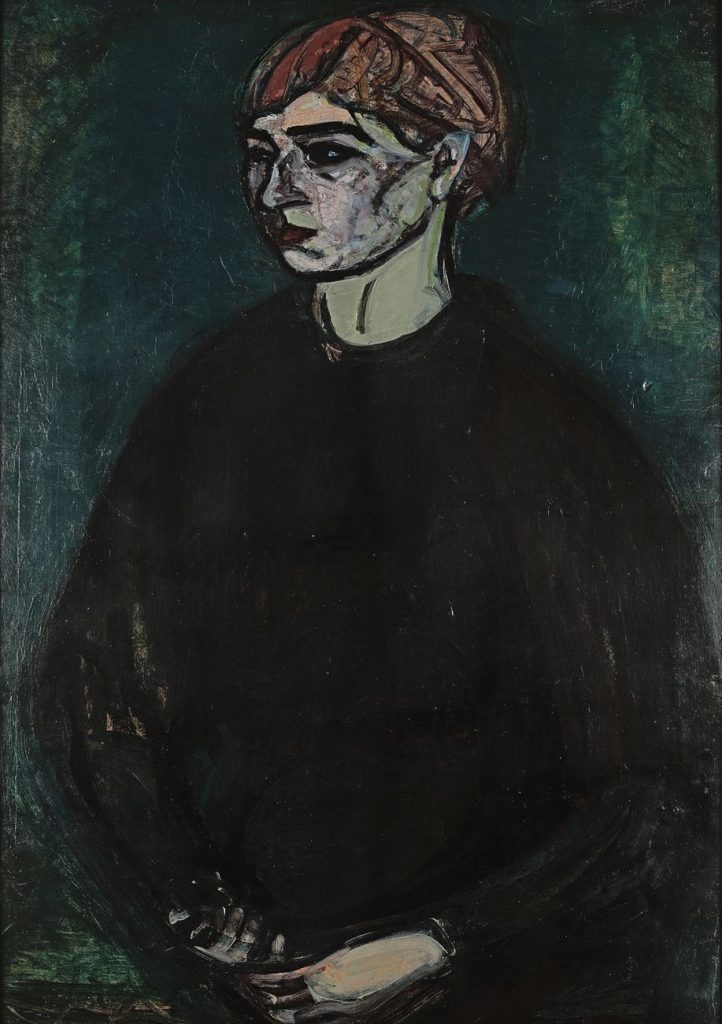
His second artistic period, that goes from 1918 to 1925, finds the artist and his painting very changed. This last one, dating back to the clear lesson of Cézanne, turns toward Cubism, with colour that becomes fantastic and aspire to transcend reality instead of simply illustrate it. So were born works such as “Fanciulla che legge”, “Testa di ragazza” or “Natura morta con brocca”. Especially in this canvas the cubist inclinations echoes: in fact we can find the objects positioned on table, within an atmosphere of shades tending to blue hues.
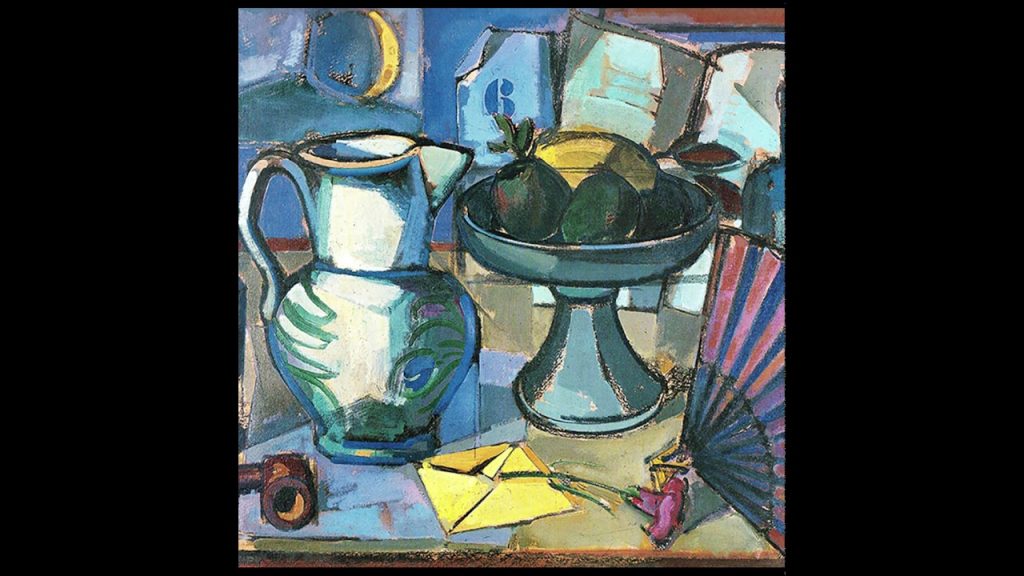
Actually it must be said that in the Italian context these are years of a widespread refusal of the avantgarde movements and rediscovery of Antiquity. Nevertheless Rossi, faithful to his own artistic independance, pursues an alternative path anticipating solutions and tendencies that will take roots only in the second postwar, such that the next generations of artists will identify him as a precursor of neo-Cubism. They are exactly the works of this second period to set the painter among the greatest artists at the base of modern Italian art, as is recognised by the critics, even if many years after. Between the first and the second artistic period, however the I World Wars happens: a terrible trauma that marks Rossi so deeply and irremediably undermines his mental balance. In the 1925 his mal de vivre worsened to the point of leading him to asylum of Saint’Artemio di Treviso. Precisely here, probably from the window of his room, he paints his last dramatic painting: “Il cortile del manicomio” (1926). It is a work with dark, sad and cold colours, light years away from the sunny and cheerful early landscapes of Bretagna, from which all his discomfort and desperation emerge. He dies about twenty years after, going from a mental institution to another one and without touching brush and colours.
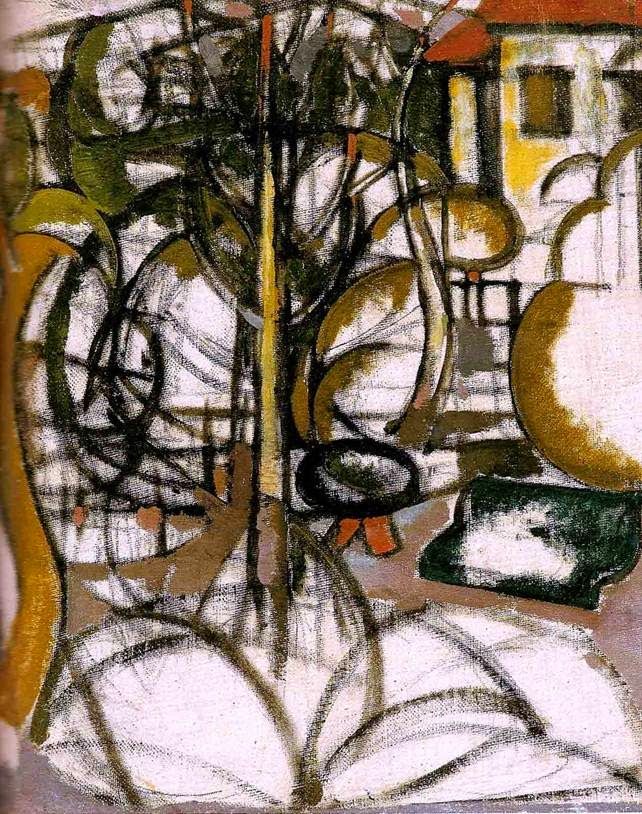
Without any doubt we can affirm that Gino Rossi was the forefather of avantgarde italian painters and he can boast a model career, although too short. Unfortunately, as happened to many other unfortunate artists in life – and the comparison with Vincent Van Gogh is necessary – the critics recognised his prominence and his extraordinary contribution to the transformation of Italian art only after his death. Despite the fact that his artistic fortune is posthumous and the impact of his work is even now little remembered in 2017, during the 70 years of his passing, his town, Venezia, and his Ca’ Pesaro commemorated him in the important exhibition “Gino Rossi a Venezia”. Dialogo tra le collezioni di Fondazione Cariverona e Ca’ Pesaro. A solitary and revolutionary genius who we’ll never end to rediscover.
